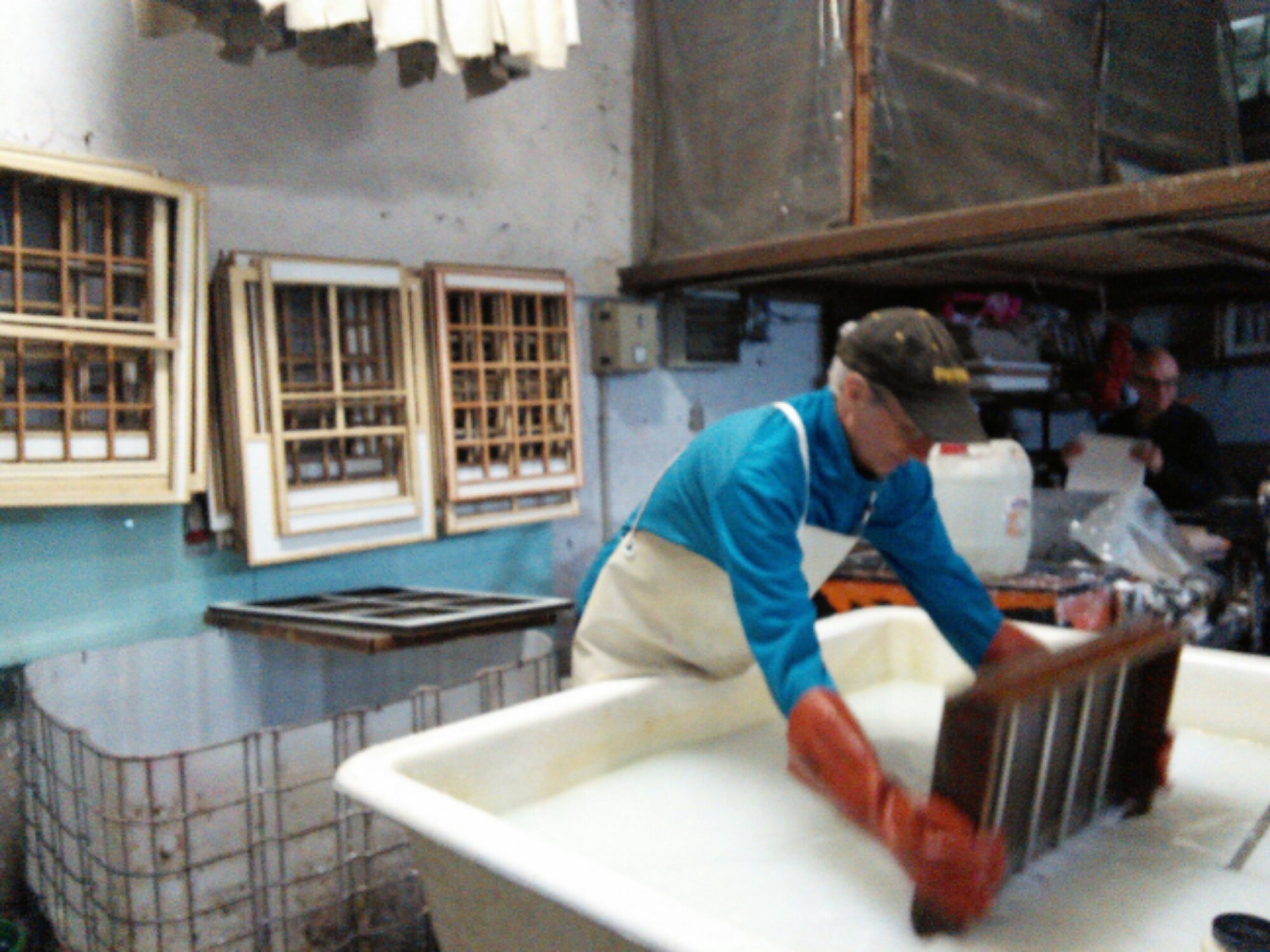Juan lets me try dipping some of the deluxe 6-up sheets, and I don a giant, waterproof apron and long rubber gloves. I had never made such a big set of sheets in my life, and my technique was pretty bad!
My first attempt was a total write-off and we had to rinse off the screen to start over. The next ones were marginally better, and luckily for me, the press compressed the flaws enough that they would be invisible to the untrained eye.
The trick is to plunge the screen & deckle vertically, quickly & deeply into the tank of pulp, until it’s immersed about 75%, then smoothly start pulling up to the surface, ending with a subtle rocking motion.
The deckle is made from a dark glue-lam with the sheet forming areas cut out and a narrow border of sponge crazy-glued around all perimeters. It’s fragile; another item to handle carefully and methidically.
We couch the wet sheets onto a table at waist height, and I manage to place the edge of the screen at its correct middle point on the edge of the table, then quickly tip it down, press firmly, rub each channel and snap it up to release. To do this without the wet paper falling off the screen takes skill and confidence. This part I can manage.
It’s very hard to teach the correct pulp dipping maneouver, however, because the tank of pulp is opaque – it’s impossible to see exactly what Juan’s hands or the screen are doing below the surface. Something to learn by hand with lots of practice. My next attempts are with a smaller screen and a single sheet deckle!
When the fresh paper has dried enough on its drying sheets that hang off lines upstairs, Javier peels them all off and piles them meticulously onto a heavy PVC sheet. These go back into the press for a final flattening at a lower pressure. When they emerge, he stacks and counts them, then packages all up for eventual shipping. But it will take days of production to fill this order.
The day ends with cleanup. The screens and deckles get hosed down to avoid any pulp drying on them – very hard to remove later. Like silkscreen printing, cleanliness preserves the investment in equipment, as well as making it possible to produce a quality product.
All photos of Bill in this post courtesy of Juan Barbé.








